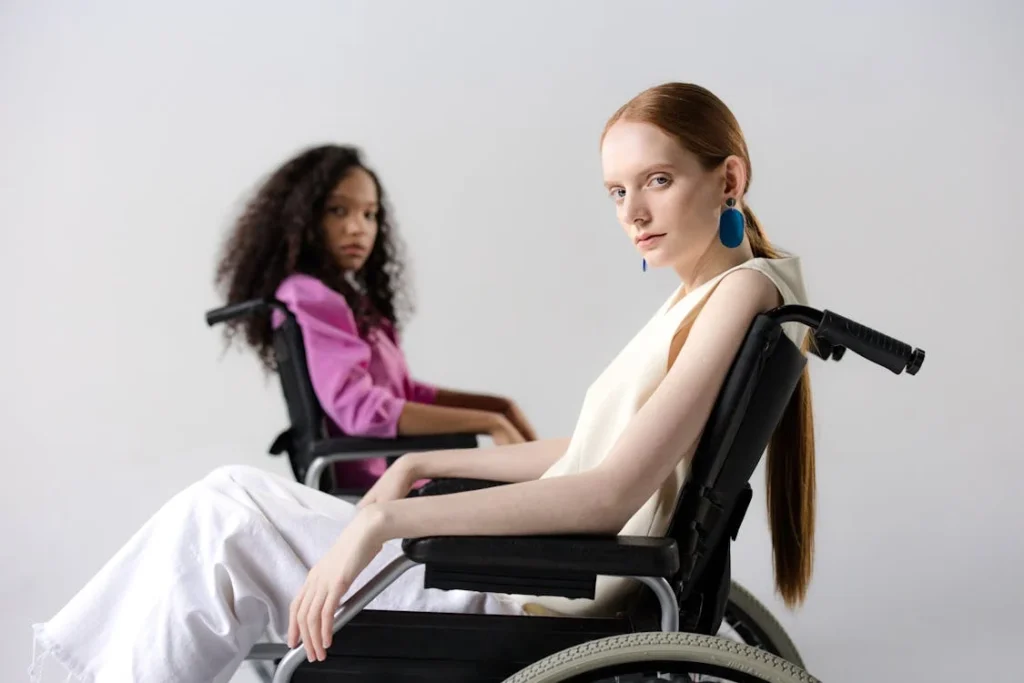Helping a child adapt to life with a prosthetic limb is not just about fitting the device—it’s about guiding them through growth, movement, and learning how to carry their weight in a healthy way.
Unlike adults, children are still developing. Their bones are growing, their muscles are changing, and their balance is constantly evolving. That means their prosthetic needs—and especially how they bear weight on it—require special care and regular attention.
Weight-bearing in pediatric prosthetic users is not a one-time task. It’s a process that continues as the child grows taller, gains strength, and becomes more active.
A prosthesis that fits well today may need changes in just a few months. If weight is not shared correctly between the prosthetic limb and the natural limb, children may start developing poor walking habits, joint pain, or posture problems without even knowing it.

Understanding Growth and Weight-Bearing in Children
The Constantly Changing Body
Children grow quickly. One month they’re standing on tiptoes, and the next they’re sprinting through the house. Their bodies change fast—bones lengthen, joints stretch, muscles strengthen, and coordination improves.
But when a child uses a prosthesis, this natural growth presents unique challenges.
Unlike an adult, a child’s limb shape, bone length, and even balance shift regularly. These changes affect how they bear weight on their prosthetic limb.
What feels stable one week might start to feel awkward or uneven just a few weeks later. That’s because their center of gravity—the invisible spot where weight is balanced—keeps moving as they grow.
When children grow unevenly, their natural leg may lengthen faster than the prosthetic side. This small change can cause them to lean, shift, or limp without realizing it.
If not corrected, it puts stress on their hips, spine, and joints, leading to discomfort or long-term problems.
This is why children using prosthetics need regular monitoring—not just to adjust the size of their device, but to make sure weight is being shared evenly and movement remains smooth and balanced.
Early Movement Patterns Shape the Future
The way a child learns to walk sets the tone for how they’ll move later in life. If a young user adapts to their prosthetic with uneven or limited weight-bearing, it can become a habit.
Over time, this habit becomes harder to unlearn. That’s why early intervention is key.
Children are naturally adaptive. Their brains and bodies are wired to learn quickly. If they’re guided with the right movements early on—through play, practice, and repetition—they can build excellent habits.
They learn to stand tall, shift their weight evenly, and trust their prosthesis as part of their own body.
But this requires more than just a well-fitted device. It takes coaching, encouragement, and the right kind of exercises to help kids feel confident.
When a child learns to bear weight evenly, it reduces the load on their healthy leg, improves balance, and helps avoid pain or fatigue during school, play, or everyday tasks.
Why Weight-Bearing Is Different for Kids
Children have softer bones and more flexible joints than adults. This makes them more responsive to pressure—but also more sensitive to misalignment.
If a child places too much weight on the wrong part of their prosthesis, or if the socket doesn’t fit well, it can cause skin irritation, muscle tightness, or joint strain.
Another big difference is activity level. Kids don’t just walk from place to place—they run, jump, climb, twist, and sometimes fall.
All this motion means their prosthesis must be able to support weight not only when standing still, but during active, unpredictable movement.
Weight-bearing for a child isn’t just about standing upright. It’s about building a foundation that supports motion in all directions, at all times of the day.
A prosthetic limb has to match that energy and be responsive enough to allow freedom without adding risk.
The challenge here is finding the right balance. Too little weight on the prosthesis, and the child may limp or compensate with their back.
Too much, and they might strain the residual limb or feel pain. That’s why the prosthesis must be designed, adjusted, and maintained with care—always with growth in mind.
The Role of Parents and Caregivers
For pediatric prosthetic users, support from home is essential. Children may not always express discomfort in clear ways.
They may just stop playing as much or begin dragging their leg slightly when tired. These small signs can be easy to miss unless a parent or caregiver is closely observing how they move day to day.
Caregivers help reinforce healthy weight-bearing by encouraging active play, reminding the child to stand evenly, and watching for changes in posture or gait.
Even something as simple as noticing that one shoe is wearing down faster can be a clue that weight is being placed unevenly.
Being involved doesn’t mean knowing everything about prosthetics. It means asking questions, paying attention, and working closely with prosthetists and therapists to make sure the child is comfortable and confident.
A strong support system creates a safer space for the child to explore, learn, and grow with their prosthesis.
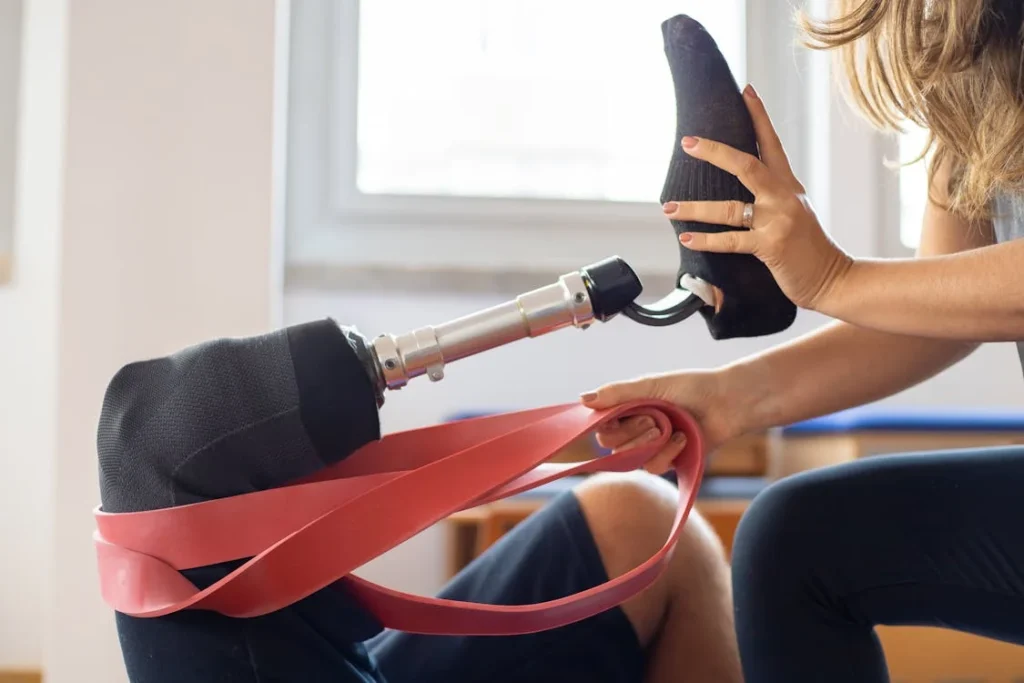
Supporting Healthy Weight-Bearing Through Movement and Design
How Proper Prosthetic Fit Affects Weight-Bearing
For a child learning to walk with a prosthesis, comfort and fit are everything. When the socket—the part of the prosthesis that connects to the residual limb—fits well, weight can be spread evenly across the limb.
This reduces pressure on any one spot and helps the child feel stable and secure.
But as children grow, that perfect fit doesn’t last forever. Their limbs lengthen and change shape. A socket that once felt snug may start to feel loose, causing the limb to shift around.
When this happens, the child often changes how they walk. They may start leaning to the side, putting more weight on their natural limb, or dragging the prosthesis instead of using it properly.
These small changes can seem harmless at first, but over time they affect muscle development, hip and spine alignment, and even confidence.
That’s why frequent socket checks and refits are so important in growing children. They prevent weight from being carried unevenly and reduce the risk of pain or injury.
At Robobionics, we make sure every pediatric fitting is designed with growth in mind. Our goal is to create adjustable, comfortable solutions that adapt with the child—not just today, but in the months ahead.
Exercises That Build Weight-Bearing Confidence
Helping a child trust their prosthesis begins with movement. But that movement has to feel safe. Early on, it can be something as simple as standing at a soft surface and shifting weight from side to side.
These basic movements help the child get used to the feeling of pressure on the prosthetic side.
Encouraging activities that involve both legs equally—like walking on flat surfaces, stepping onto low platforms, or even pushing toys—can make a big difference.
These playful motions build strength and teach the child to share weight naturally across both limbs.
The goal isn’t to force weight-bearing but to make it enjoyable. If the activity feels like a game, children are more likely to participate, and they learn faster.
That’s one reason we promote gamified rehab. Interactive games that respond to motion help children move, practice, and grow stronger—without the fear or pressure of formal exercise.
Even short daily sessions can help muscles adapt and improve posture. And because kids learn best by doing, these fun, repeated movements become part of their muscle memory.
Understanding the Impact of Uneven Growth
Growth spurts are a normal part of childhood. But for a child with a prosthetic limb, rapid growth can cause mismatches.
If the natural leg grows faster than the prosthetic side, the pelvis begins to tilt. This changes how weight is distributed and affects how the spine and hips function.
Over time, this uneven weight-bearing can lead to back pain, hip strain, or even leg length differences that affect walking patterns.
That’s why regular checkups are not just about adjusting the fit—they’re about protecting the child’s entire body from long-term imbalances.
It’s important to address growth as soon as changes are noticed. Maybe the child begins to walk differently, or seems to tire more quickly, or suddenly avoids physical play.
These can be signs that the prosthetic side isn’t keeping up.
At Robobionics, our pediatric care includes periodic growth assessments, socket resizing, and gait reviews to make sure the prosthesis continues to match the child’s physical needs and supports proper alignment throughout each phase of development.
Encouraging Movement Without Overloading
While movement is key to improving weight-bearing, it’s also important to avoid overloading the prosthetic side.
Children are naturally active, but if the prosthesis isn’t aligned correctly or the child hasn’t yet built enough muscle support, too much activity can lead to soreness or injury.
That’s why we always recommend gradually increasing activity levels. Start with shorter walks or low-impact play.
Slowly add more time and intensity as the child’s strength improves. The focus should always be on quality of movement—not quantity.
The child’s comfort is the best guide. If they start favoring one leg, slowing down, or asking to rest more often, it’s a good time to check in with the prosthetist or therapist.
These changes might mean the limb has grown, the socket is slipping, or a new adjustment is needed.

Long-Term Strategies for Safe and Balanced Growth
Planning for Growth, Not Just the Next Step
Children don’t stop growing once their prosthesis fits right. In fact, fitting a child with a prosthesis is often just the start of a longer journey—one that includes regular updates, follow-ups, and refinements.
As their bones grow and their posture changes, what once worked smoothly might slowly begin to feel uncomfortable or awkward. If ignored, these shifts can quietly affect how their weight is carried and may lead to problems over time.
This is why pediatric prosthetic care must always look ahead. A good prosthetic solution for a child is not only comfortable and functional now, but also ready to change with them.
Whether it’s a socket that allows for some growth before needing replacement, or a foot that can be realigned as their stride lengthens, long-term planning helps protect their comfort and mobility.
At Robobionics, our design approach is based on this forward-thinking mindset. We don’t just focus on fit—we build with adjustability in mind. It means fewer disruptions for the child and more peace of mind for families.
Teaching the Body to Move Right From the Start
What a child learns early becomes part of how they move for years to come. That’s why teaching proper form and balance from the beginning is one of the most valuable things we can do.
This doesn’t always require complex therapy. Simple things like helping a child stand tall, encouraging them to bear weight evenly on both legs, or guiding their steps as they walk across a room, make a huge impact.
Over time, these small habits build strong foundations. They teach the child to trust their prosthesis, move with confidence, and avoid the postural problems that come from years of uneven weight-bearing.
Rehabilitation should be part of the child’s routine—not as something separate from life, but as something built into play, school activities, and family time.
That way, the child learns to see movement not as a task or therapy, but as a natural part of being themselves.
Gamified rehab programs like the ones we offer at Robobionics are especially helpful here. They turn repetition into fun, and help children strengthen their muscles, balance, and weight-bearing ability without even realizing they’re doing rehab.
The Emotional Side of Movement
For growing children, especially those who use prosthetics, the emotional side of movement matters just as much as the physical.
Some children may become shy or hesitant after surgery or when adjusting to a new device. They may be afraid of falling, or unsure of how others will react.
If the child doesn’t feel confident in their prosthesis, they may avoid bearing weight on it, even if it’s perfectly aligned. Over time, this hesitation can lead to muscle weakness, imbalance, or even social withdrawal.
That’s why emotional support and encouragement are just as important as physical training.
A big part of helping a child succeed is helping them feel proud of their movement. Celebrating small steps—like standing a little longer, walking a few extra feet, or playing without assistance—builds confidence. It teaches them that their prosthesis isn’t holding them back—it’s helping them move forward.
At Robobionics, we work with families to support not just the child’s body, but also their mindset. We believe that confidence, movement, and independence are deeply connected.
And when a child begins to feel strong and capable, their weight-bearing improves naturally.
Communication Is the Key
One of the most overlooked parts of pediatric prosthetic care is communication. Children may not always say when something feels off.
They might not have the words to explain discomfort or the courage to speak up. That’s why open, regular conversations between the child, parents, and care team are essential.
Ask simple questions: Does your leg feel different today? Does it hurt when you walk? Are your shoes feeling tighter on one side? These small check-ins help catch problems early.
It’s also important to listen to what’s not being said. If the child starts limping, avoiding certain activities, or getting frustrated with the prosthesis, these can be signs of a fit issue or weight-bearing imbalance.
At Robobionics, we always take the time to hear our young users—and just as importantly, we listen to their parents and therapists.
The best outcomes happen when everyone works together to understand what the child needs as they grow and change.
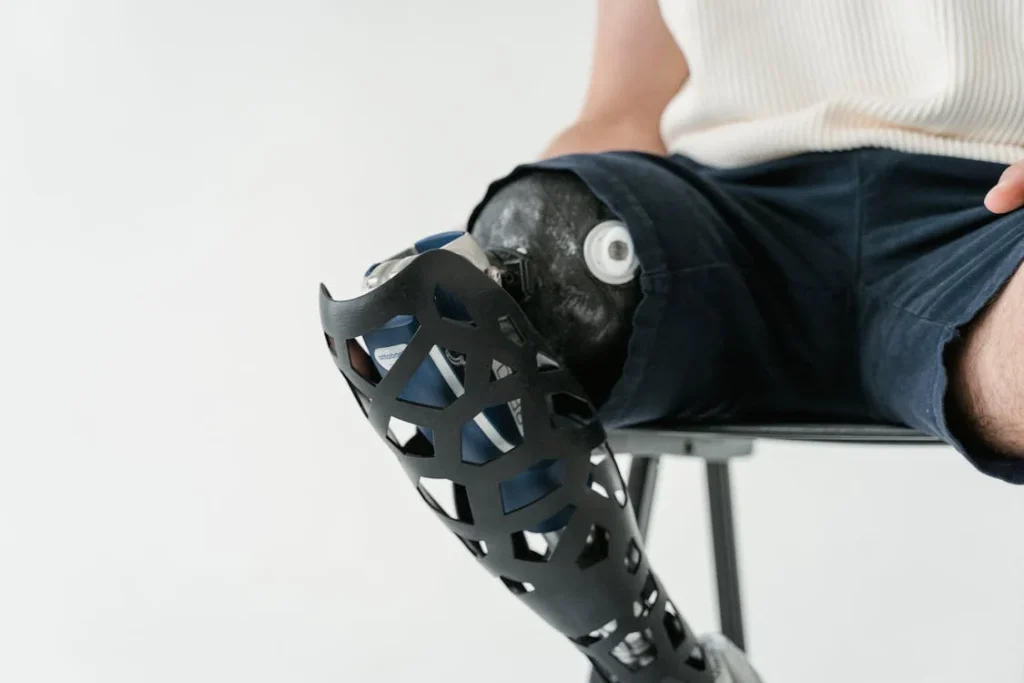
Monitoring, Adjusting, and Evolving With Each Stage of Growth
Tracking Progress Over Time
Children grow in bursts, and with each stage, their needs change—not just in terms of height or limb size, but also how they move, what activities they enjoy, and how they interact with the world.
This is why tracking their development is so important in pediatric prosthetic care. What works during early childhood may need to be adapted during school years, and again during adolescence.
Regular evaluations help catch small issues early. Maybe a socket that once fit perfectly now leaves red marks or feels too tight. Maybe the child has started putting more weight on their natural limb without realizing it.
These clues often appear before the child can express discomfort in words. When these are spotted early, solutions are usually simple and quick—like adjusting the alignment, changing the liner, or refitting the socket.
Tracking also helps us celebrate progress. Watching how a child begins to bear weight more evenly, walk with better posture, or play for longer periods shows that they’re getting stronger and more confident.
These milestones matter, both physically and emotionally.
We encourage parents and caregivers to take photos, keep notes, and share observations with the prosthetist or therapist.
A quick phone video of a child walking or standing at home can reveal valuable details about weight distribution and movement that may not show up in the clinic.
Keeping Up With Lifestyle Changes
As children grow, their lifestyles change too. A toddler might only need basic walking support, while a school-aged child may want to run in the playground or climb stairs.
Teenagers may take on sports, longer walks, or other demanding activities. Each new phase brings new challenges—and new opportunities to improve weight-bearing tolerance.
At Robobionics, we design our pediatric prosthetics not just for walking, but for living. That means helping children not only get around, but thrive in every space they move through—school, home, social settings, and beyond. As their interests grow, so must their prosthetic capabilities.
Whether that means adjusting for impact during running, or improving foot design for daily comfort, we help children keep doing the things they love without pain or restriction.
When children are actively involved in adjusting their prosthesis for these changing needs, they develop a stronger connection to their own progress.
They become more aware of how their body works, what helps them feel better, and when something needs to be changed. This kind of awareness builds independence—an important part of growing up with confidence.
Collaborative Care Makes the Difference
No one understands a growing child better than their family. That’s why prosthetic care must always be a team effort.
It includes parents, caregivers, prosthetists, physiotherapists, occupational therapists, teachers, and sometimes even pediatricians. Each person plays a role in helping the child move well, feel supported, and stay motivated.
When everyone communicates openly, the child benefits. A therapist might notice an issue during a therapy session that a prosthetist can fix with a small alignment change.
A parent might spot something at home—like a sudden dislike for putting on the prosthesis—that hints at discomfort.
A teacher might share that the child seems tired after gym class, which could indicate that the prosthetic needs an update to handle physical activity.
At Robobionics, we build strong relationships with families and their care teams. We believe that good prosthetic care goes beyond appointments—it lives in the small, daily interactions and support systems that surround the child every day. Our role is to listen, adjust, and provide lasting solutions that grow with them.
Adapting to Emotional and Social Growth
As children grow, they become more aware of how they’re different from others—and that can affect how they feel about using a prosthesis.
Some may feel proud, others may become shy or reluctant. These feelings can affect how they move, how much they wear their prosthesis, and how much weight they’re willing to put on it.
Supporting a child emotionally is just as important as supporting them physically. Encouragement, positive reinforcement, and giving the child control over small decisions—like the look of their prosthetic or what activities to try—can help them build a healthy relationship with their limb and their body.
When children feel emotionally supported, they move with more freedom. They are more likely to try new things, engage in physical play, and stay consistent with wearing their device. All of this contributes to better posture, stronger weight-bearing habits, and less strain on their natural limb and spine.
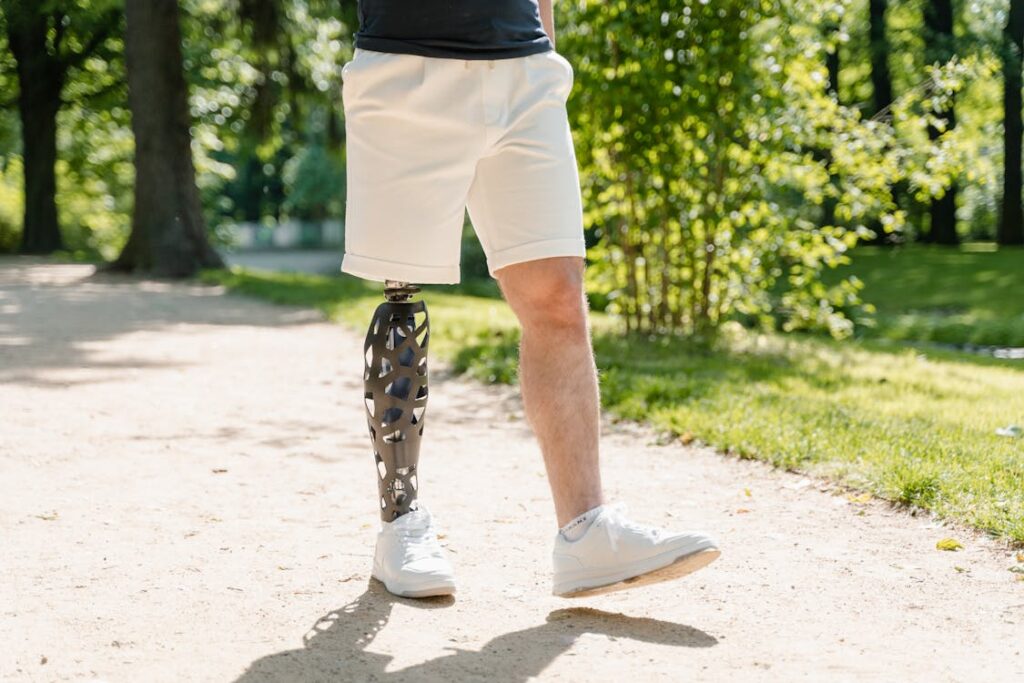
Embracing Movement for Lifelong Independence
The Transition Into Adolescence
As children move into their teenage years, the challenges of prosthetic use evolve. Growth becomes faster, muscles lengthen, and bodies become heavier and stronger.
Hormonal changes also affect bone development and energy levels, and with these changes come increased demands on the prosthetic limb.
Weight-bearing during this stage must be continuously adapted. A prosthesis that was designed for walking in early childhood may not support the stride, pace, or activity level of an adolescent.
Without timely updates, weight-bearing may shift unevenly, causing hip tilts, spinal curvature, or chronic fatigue.
Teenagers may also become more active socially and physically. School sports, long walks with friends, or even basic independence like commuting or biking require a new level of comfort and alignment.
The prosthetic limb must not only keep up but also support the teen’s confidence and identity.
This is a critical time to reinforce body awareness. Teen users should be encouraged to listen to their bodies, speak up about any discomfort, and take ownership of their health.
Teaching them how to recognize signs of misalignment—like unusual soreness, changes in posture, or difficulty walking—is empowering and ensures early intervention when needed.
Technology, Tools, and the Future
With advancements in prosthetic technology, today’s pediatric users have more opportunities than ever to grow with their devices.
Smart sockets, adjustable pylons, and advanced foot systems are now designed to support not just walking but a full range of motion. These tools help distribute weight more evenly, reduce joint strain, and promote a natural gait.
But technology works best when it’s tailored to the child. Off-the-shelf devices may not always meet their specific weight-bearing needs, especially during fast periods of growth.
At Robobionics, we use data, clinical insights, and years of experience to customize every solution—not just for the child’s current height or weight, but for the way they move and live.
Gamified rehab is another valuable tool. Our digital rehab programs turn everyday movement into fun challenges, helping children practice balance, coordination, and strength without needing to visit a clinic every day.
These tools promote healthy weight-bearing through repetition, and because they’re engaging, children are more likely to use them consistently.
Technology alone can’t replace care, but when combined with expert guidance, it becomes a powerful tool for lifelong mobility and freedom.
Empowering Families With Knowledge
Parents and caregivers play a central role in making sure children move safely and confidently with their prosthetic limbs. That’s why education is a key part of every fitting and follow-up at Robobionics.
We teach families how to monitor alignment, how to support their child’s activity level, and how to spot the small changes that can signal a need for an adjustment.
Families are encouraged to ask questions, stay involved in therapy sessions, and keep an open dialogue with care providers.
The more informed the family is, the more empowered the child becomes. And when the family feels confident, the child feels supported.
We also help families prepare for future transitions—whether it’s switching from one prosthetic system to another, moving into adolescence, or even preparing for college or work.
These milestones are easier when everyone understands the role weight-bearing plays in mobility, comfort, and independence.
Growing Up Without Limits
Ultimately, our goal is to help every child with a prosthesis grow up with the same confidence and freedom as their peers.
This starts with safe, comfortable weight-bearing. It continues with flexible, customized prosthetics. And it becomes real through trust, education, and support.
A child who learns to move well, stand tall, and walk confidently is a child who sees their prosthesis not as a limitation—but as a partner in their life.
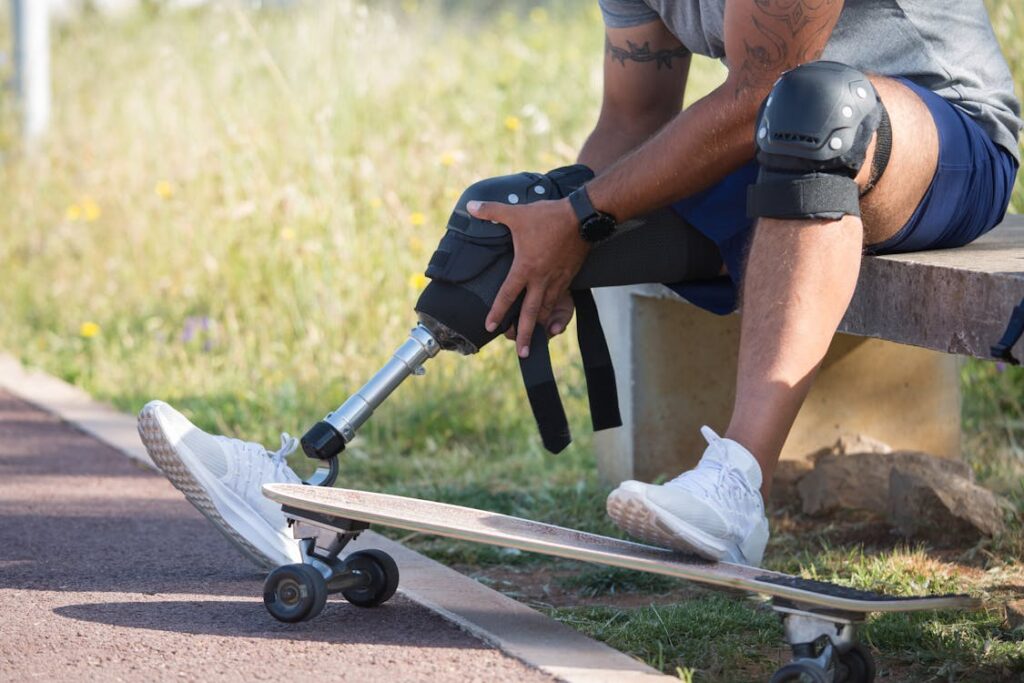
Conclusion
Weight-bearing isn’t just about standing. For growing prosthetic users, it’s the foundation of independence, balance, and confidence. As children grow, so does their need for smart, responsive prosthetic care—care that adjusts with every step, every growth spurt, and every new challenge.
At Robobionics, we specialize in building pediatric solutions that don’t just support movement—they support futures. With precision fitting, long-term planning, and family-centered care, we help young users carry their weight evenly, safely, and proudly.
If you’re a parent, caregiver, or healthcare provider looking for guidance, we’re here to help.
Book a consultation or learn more about how our pediatric prosthetic systems can support your child’s growth—physically, emotionally, and confidently.



